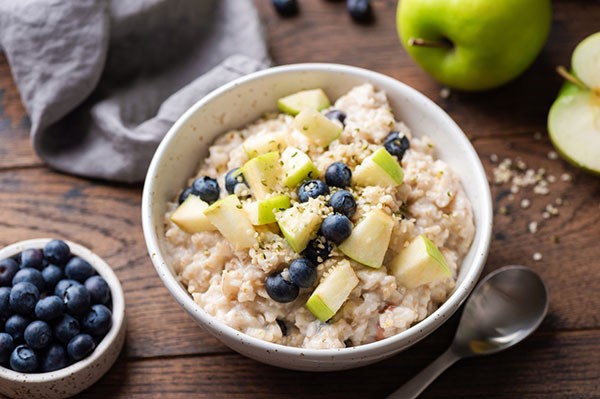Experiencing the discomfort of acid reflux can significantly impact your daily life. Gastroesophageal reflux disease (GERD) is a common condition, and fortunately, adopting certain lifestyle changes, especially in your diet and eating habits, can be highly effective in managing its symptoms. Understanding which foods to avoid is a crucial step in preventing those uncomfortable episodes.
Identifying Your Acid Reflux Triggers: Foods to Limit
It’s no longer recommended to adhere to a bland diet for acid reflux. In fact, a diverse range of delicious and healthy foods can be part of your GERD-friendly meal plan. However, certain foods are known to be common culprits in triggering reflux and heartburn. Recognizing and limiting these foods can make a significant difference in your comfort levels. These trigger foods often include:
-
High-Fat and Fried Foods: These types of foods, including fried chicken, fatty cuts of meat, and rich pastries, tend to stay in your stomach for an extended period. This prolonged digestion time increases the likelihood of stomach acid flowing back up into the esophagus, leading to GERD symptoms. The increased digestion time and potential to relax the lower esophageal sphincter make fatty and fried foods key contributors to acid reflux.
-
Spicy Foods: While adding zest to your meals, spicy foods can be problematic for acid reflux sufferers. Ingredients like chili peppers and hot sauces can irritate the esophageal lining, intensifying the burning sensation of heartburn.
-
Citrus Fruits and Juices: Fruits like oranges, grapefruits, lemons, and limes are highly acidic. This acidity can exacerbate heartburn symptoms when stomach acid backs up into the esophagus, further irritating an already sensitive lining.
-
Tomato-Based Sauces and Products: Tomatoes are naturally acidic, and when concentrated in sauces, ketchup, or tomato juice, they can trigger heartburn. This is due to their potential to increase stomach acid production and irritate the esophagus.
-
Vinegar and Vinegar-Based Dressings: Vinegar is another acidic substance that can worsen acid reflux symptoms. Salad dressings, pickles, and other foods high in vinegar may contribute to heartburn and discomfort.
-
Chocolate: A beloved treat, chocolate contains compounds like caffeine and theobromine that can relax the lower esophageal sphincter, the muscle that prevents stomach acid from flowing back into the esophagus. This relaxation can increase the risk of reflux.
-
Caffeine: Beverages and foods containing caffeine, such as coffee, tea, and energy drinks, can also relax the lower esophageal sphincter and stimulate acid secretion in the stomach, both of which can contribute to acid reflux.
-
Onions: Raw onions, in particular, can trigger acid reflux in some individuals. They contain compounds that may increase stomach acid production and cause bloating, which can pressure the lower esophageal sphincter.
-
Peppermint and Spearmint: While often thought of as soothing, peppermint and spearmint can relax the lower esophageal sphincter, making it easier for stomach acid to reflux into the esophagus. This effect can negate any perceived soothing benefits for acid reflux.
-
Carbonated Drinks: Fizzy beverages, including soda and sparkling water, can increase pressure in the stomach. This added pressure can force stomach contents, including acid, into the esophagus, triggering reflux symptoms.
-
Alcohol: Alcoholic beverages can irritate the stomach lining and relax the lower esophageal sphincter. Different types of alcohol and mixers can exacerbate acid reflux to varying degrees, but moderation or avoidance is generally recommended.
If you regularly consume any of these foods, consider trying an elimination diet. Remove them from your diet to observe if your reflux symptoms lessen. After a period of relief, you can gradually reintroduce these foods one at a time, carefully monitoring your body’s response to identify your specific triggers. This process can help you personalize your diet for optimal acid reflux management.
 photo of a bowl of oatmeal with blueberries and chunks of green apple; a small bowl of berries and an apple cut in half are next to the bowl
photo of a bowl of oatmeal with blueberries and chunks of green apple; a small bowl of berries and an apple cut in half are next to the bowl
Foods to Embrace for Acid Reflux Relief
While knowing what not to eat is important, focusing on foods that can ease or prevent acid reflux is equally beneficial. Certain food groups are known to be gentler on the digestive system and less likely to trigger symptoms. Incorporating these into your diet can be a proactive step towards managing GERD. Consider including these foods in your GERD-friendly diet:
-
Non-Citrus Fruits: Unlike their citrus counterparts, fruits like bananas, melons (watermelon, cantaloupe, honeydew), apples, and pears are low in acid and generally well-tolerated by those with acid reflux. They offer natural sweetness and essential nutrients without the heartburn trigger of citrus fruits.
-
Vegetables: Most vegetables are naturally low in fat and sugar, and they are good sources of fiber, which is beneficial for digestive health. While tomato sauce can be problematic due to acidity, fresh vegetables, whether steamed, baked, grilled, or eaten raw, are generally safe and healthy choices. Experiment with different vegetables to find your personal tolerance levels.
-
Lean Meats and Poultry: Opt for lean protein sources like chicken breast, turkey, fish, and lean cuts of beef or pork. Preparing them in ways that minimize added fat, such as grilling, poaching, baking, or broiling, is best. Enhance their flavor with fresh herbs instead of spicy seasonings, which can trigger reflux.
-
Whole Grains: Foods like oatmeal, brown rice, whole-wheat bread, and couscous are excellent sources of complex carbohydrates and fiber. Fiber aids digestion and can help absorb stomach acid. Choose whole grain options over refined grains for their added nutritional benefits.
-
Healthy Fats: Incorporate unsaturated fats from plant and fish sources into your diet. Olive oil, sesame oil, canola oil, sunflower oil, and safflower oil are good choices for cooking and dressings. Avocados, nuts, seeds, soybeans, and fatty fish like salmon and trout provide healthy fats and omega-3 fatty acids, which have anti-inflammatory properties. These healthy fats are preferable to saturated and trans fats, which can exacerbate acid reflux.
Optimizing Eating Habits for Acid Reflux Management
Beyond food choices, how you eat is also crucial in managing acid reflux. Simple adjustments to your eating habits can significantly reduce the frequency and severity of heartburn and reflux episodes. Consider these beneficial eating habits:
-
Eat Smaller, More Frequent Meals: Large meals can put pressure on your stomach and increase the likelihood of acid reflux. Smaller, more frequent meals throughout the day can help prevent your stomach from becoming overly full, reducing pressure on the lower esophageal sphincter.
-
Avoid Lying Down After Eating: Gravity plays a significant role in keeping stomach acid where it belongs. Lying down, especially immediately after a meal, makes it easier for stomach acid to flow back into the esophagus. Avoid napping or reclining right after eating. Aim to stay upright for at least 2-3 hours after meals.
-
Time Your Meals Strategically: Eating too close to bedtime is a common trigger for nighttime heartburn. Give your body ample time to digest before lying down. Avoid eating for at least three to four hours before you go to sleep. This means no late dinners or midnight snacks.
-
Limit Exercise After Eating: Vigorous exercise shortly after eating can increase pressure on your stomach and propel stomach acid into the esophagus. Avoid strenuous workouts for a couple of hours after meals. Gentle activity, like a leisurely walk, is generally fine and can even aid digestion.
-
Mindful Trigger Food Indulgence: If you are taking medication to manage your acid reflux, occasional indulgence in a known trigger food might be manageable. However, it’s still best to generally avoid foods that you know consistently cause heartburn. Medication can provide relief, but dietary management remains a cornerstone of long-term GERD control.
By understanding which Foods To Avoid With Acid Reflux and adopting beneficial eating habits, you can take proactive steps to minimize symptoms and improve your overall comfort and well-being. Remember that individual triggers can vary, so paying attention to your body’s response to different foods and eating patterns is key to personalized acid reflux management.
